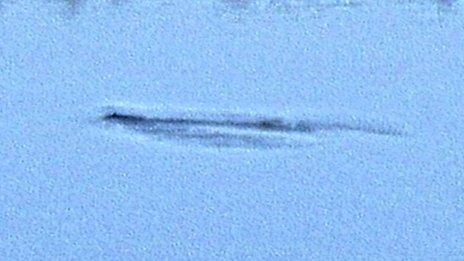Tasmanian tiger: The enduring belief in an extinct animal
- Published
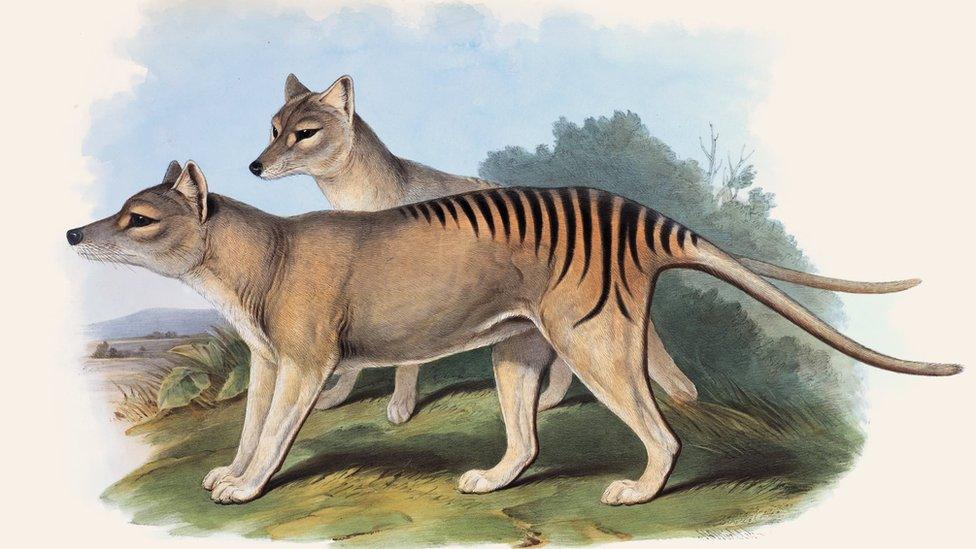
The Tasmanian tiger was the world's largest carnivorous marsupial
In the striped and hairy history of the Tasmanian tiger, those who believe the extinct animal has quietly survived have offered up all kinds of evidence.
The animal, also known as a thylacine, was declared extinct 80 years ago.
But over the decades various people have offered hazy eyewitness accounts and undocumented physical evidence as proof that some are still out there.
This week, images circulated by a group of amateur enthusiasts was met with both excitement and scepticism.
The grainy video footage, external, posted online by the Thylacine Awareness Group, purports to show an animal with a long tail moving through a backyard.
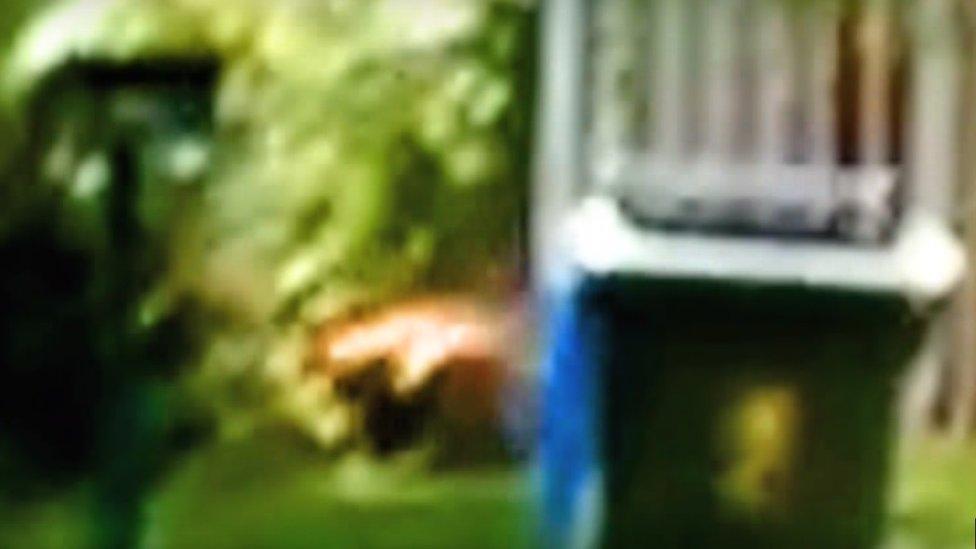
A freeze fame from a video which its creators claim shows a Tasmanian tiger
Amateur researcher Neil Waters claims it shows a small thylacine, alive and well in South Australia's Adelaide Hills.
He has a theory that the carnivorous marsupial may have survived undiscovered on mainland Australia because it is an migratory apex predator which may burrow dens.
"I first saw it in a book when I was a lad in primary school and it said 'presumed extinct' and it sparked something in my mind way back then that's never really gone away," he told the BBC.
Mr Waters also dismisses the suggestion that the search for the creature enters the realm of cryptozoology.
"There's plenty of specimens in museums around the world that proves this animal really did exist," he said.
"I guess that gives us one advantage over someone that's looking for Big Foot or a UFO."
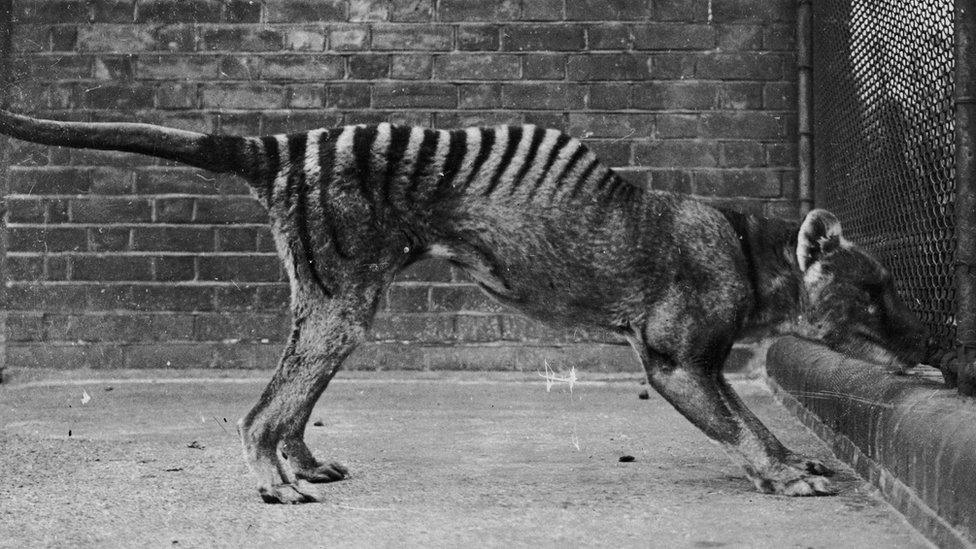
The last captive Tasmanian tiger died at Hobart Zoo in 1936
Experts have roundly debunked the footage, arguing the blurry video does nothing to prove the continuing existence of the thylacine
They point out that evidence of dead prey should also have been found.
Dr Karl Kruszelnicki, a science commentator based at the University of Sydney, said the most surprising thing about the footage was its terrible quality.
"It's remarkable that it is out of focus in a time that we have autofocus cameras," he said.
His explanation for the perpetuation of the belief unexplained phenomenon is simple.
"For some people the world around them, they don't understand it, so they have to make stuff up."
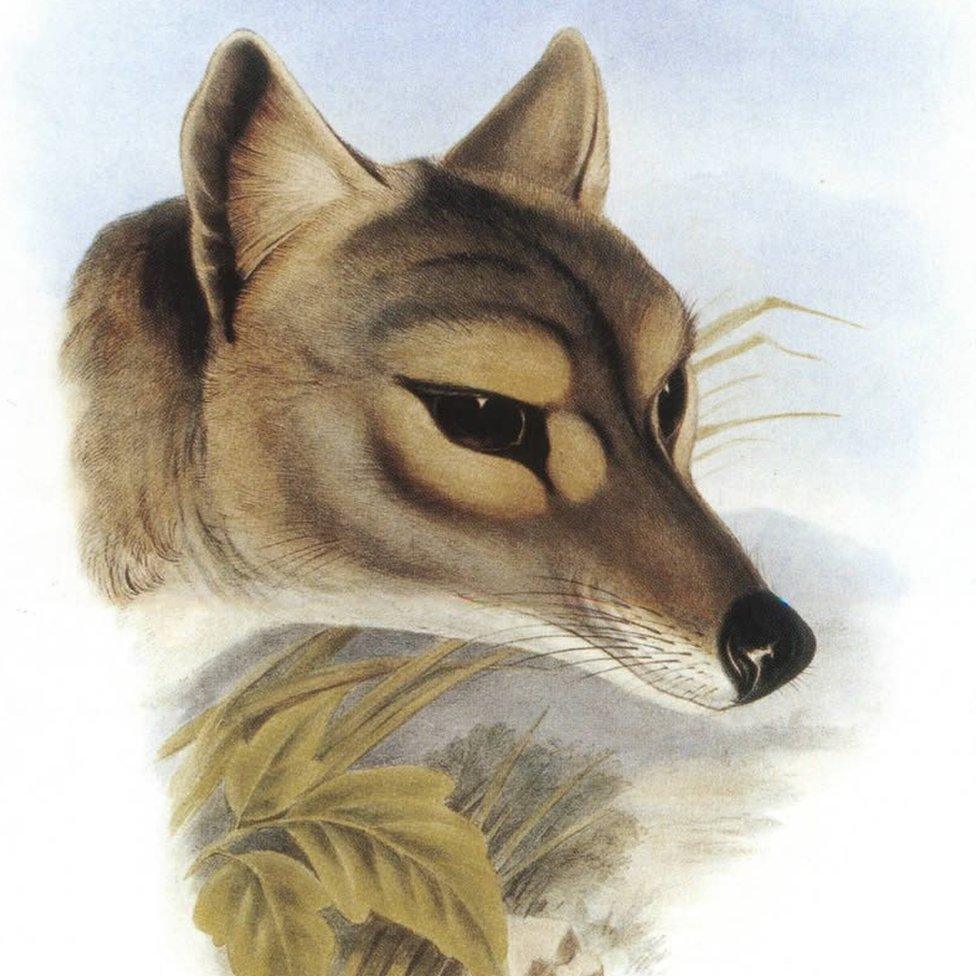
The Tasmanian tiger serves as a cautionary tale for humanity
The last known Tasmanian tiger died at Hobart zoo in 1936. The species was deliberately hunted to extinction by farmers incensed at the number of sheep killed by the carnivores.
However, thousands of sighting have been reported in Tasmania and mainland Australian in the decades since.
In 2005, The Bulletin magazine offered a A$1.25m (£700,000; $1m) reward for the capture of a live thylacine.
Scientists have even spoken about resurrecting the species, external through cloning schemes reminiscent of Jurassic Park.
Dr Cath Temper, a mammals expert from the South Australian museum, said the latest footage "could really be anything".
While there is a remote possibility there could be a few survivors in Tasmania, she says, this is unlikely to be the real thing, as "there's never been a thylacine specimen from the mainland".
"But you never know," she said. "It would be arrogant if I said there was no chance."
- Published4 May 2011
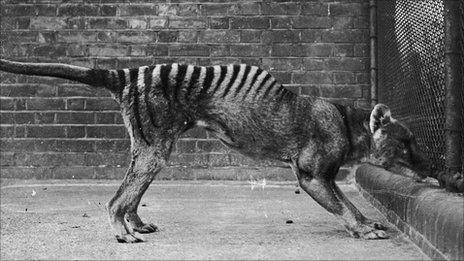
- Published24 March 2012
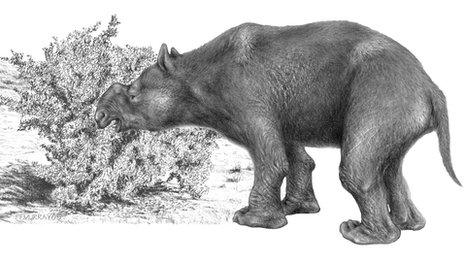
- Published5 November 2013
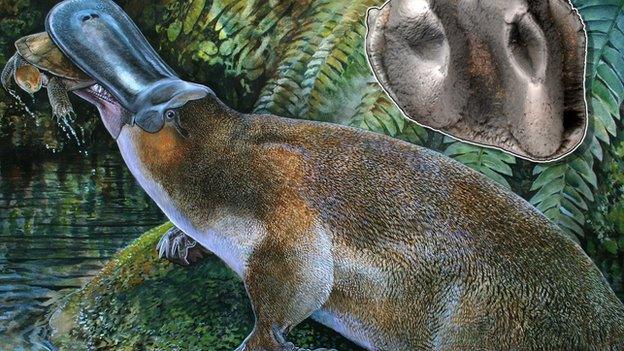
- Published2 February 2012

- Published20 February 2012
